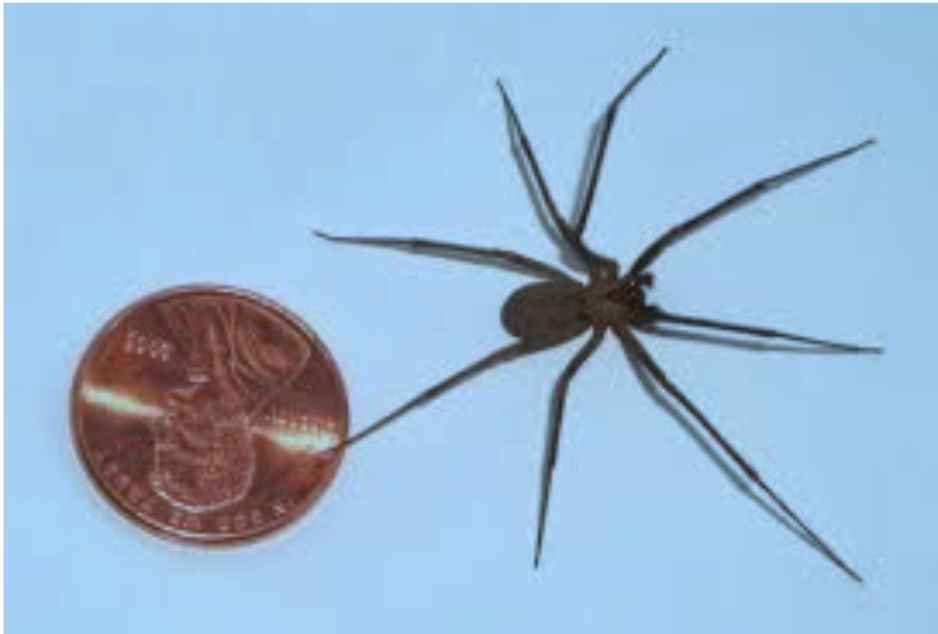Be on the lookout for this small creature! Mitch, a monthly correspondent and Drummers alumnus, gives some precautions to avoid this venomous spider! Read on to learn more!
The “Brown Recluse” is one of the few species in North America whose venom is considered medically significant. It is very timid and non-aggressive and simple precautions can be taken to avoid bites.

This is a potentially dangerous species because its venom contains sphingomyelinase D, a necrosiscausing enzyme. Reactions to bites vary from “unremarkable” (little, if any, damage and selfhealing) and “mild” (redness and itching, but usually selfhealing) to “dermonecrotic” (a necrotic skin lesion that requires medical intervention) or, very rarely “systemic or viscerocutaneous” (affecting the vascular system and potentially fatal).
Lastly, the potential for bites is slim, and can be largely avoided by taking simple precautions. There is a neverending list of spider species (and even insects!) that are often mistaken for “brown recluses”. A couple of the top looklikes are the adult male “S outhern House Spider” and “Long Legged Sac Spiders”, which are both types of spider that tend to be found in or around human habitations. They all have vastly different eye arrangements, though, so be sure to check. Perhaps the only spider that can be mistaken for a brown recluse based on the eyes alone, is the “spitting spider”, but they can typically be ruled out by other obvious physical features. Keep in mind that medical professionals, the occasional pest control employee, and even entomologists have been known to misidentify these creatures! It is important to ask someone with knowledge and experience specific to arachnids.
Small Creature with a Deadly Bite
Posted: August 8, 2016 by Academy Director
Be on the lookout for this small creature! Mitch, a monthly correspondent and Drummers alumnus, gives some precautions to avoid this venomous spider! Read on to learn more!
The “Brown Recluse” is one of the few species in North America whose venom is considered medically significant. It is very timid and non-aggressive and simple precautions can be taken to avoid bites.
This is a potentially dangerous species because its venom contains sphingomyelinase D, a necrosiscausing enzyme. Reactions to bites vary from “unremarkable” (little, if any, damage and selfhealing) and “mild” (redness and itching, but usually selfhealing) to “dermonecrotic” (a necrotic skin lesion that requires medical intervention) or, very rarely “systemic or viscerocutaneous” (affecting the vascular system and potentially fatal).
Lastly, the potential for bites is slim, and can be largely avoided by taking simple precautions. There is a neverending list of spider species (and even insects!) that are often mistaken for “brown recluses”. A couple of the top looklikes are the adult male “S outhern House Spider” and “Long Legged Sac Spiders”, which are both types of spider that tend to be found in or around human habitations. They all have vastly different eye arrangements, though, so be sure to check. Perhaps the only spider that can be mistaken for a brown recluse based on the eyes alone, is the “spitting spider”, but they can typically be ruled out by other obvious physical features. Keep in mind that medical professionals, the occasional pest control employee, and even entomologists have been known to misidentify these creatures! It is important to ask someone with knowledge and experience specific to arachnids.
Category: Youth Blog Tags: education, inspiration, nature observation, outdoors, youth